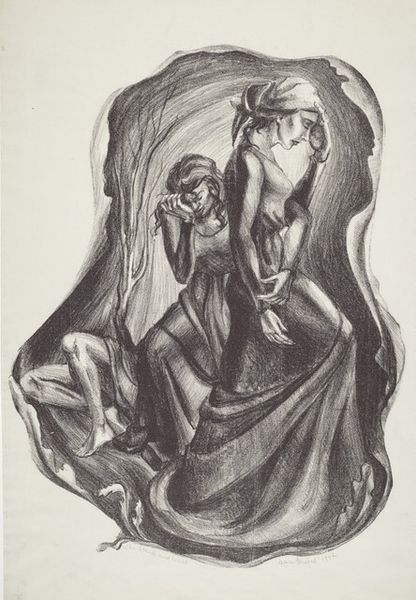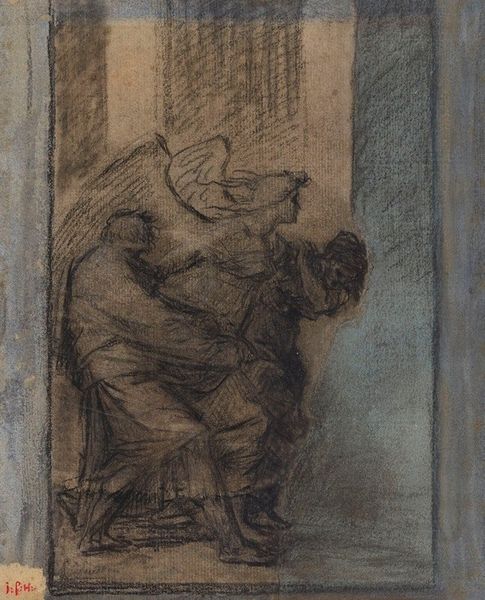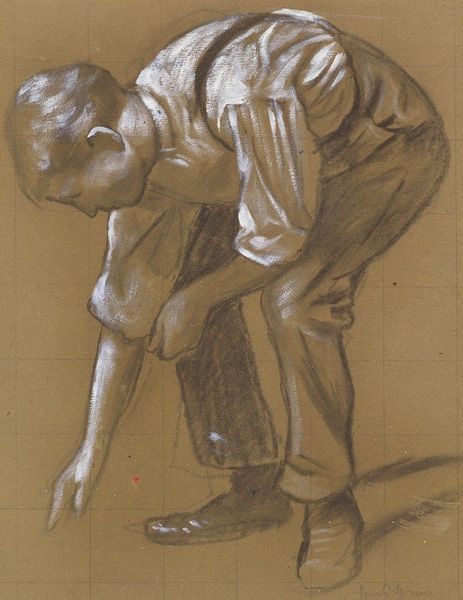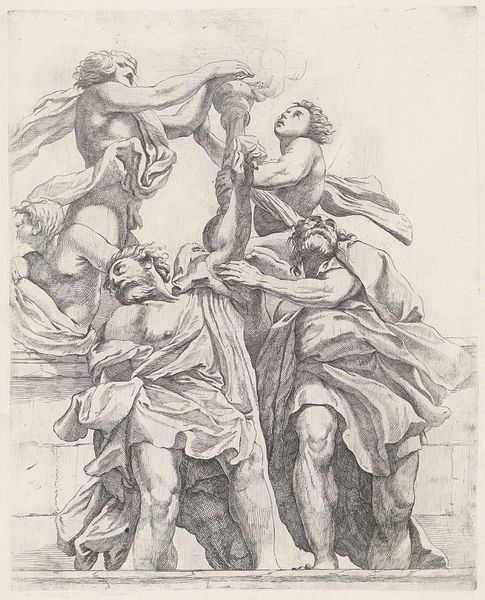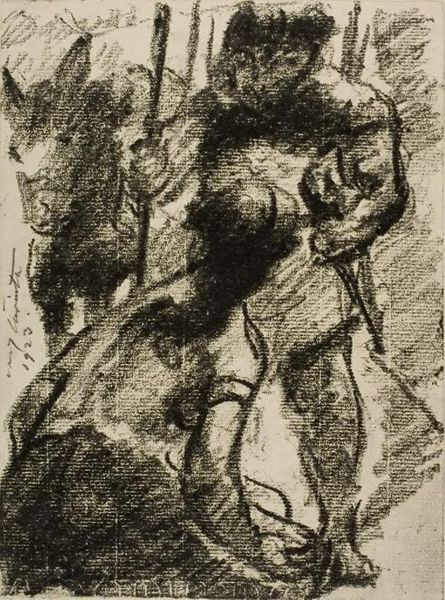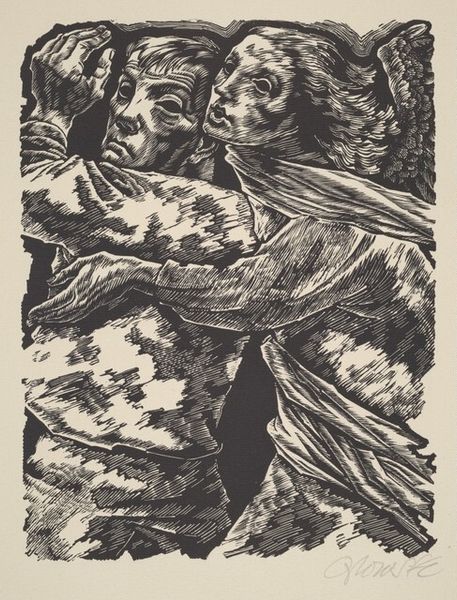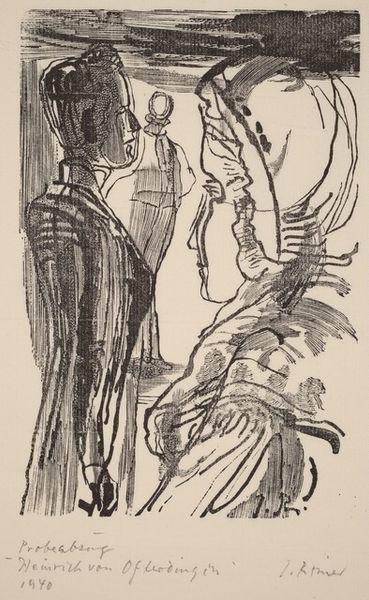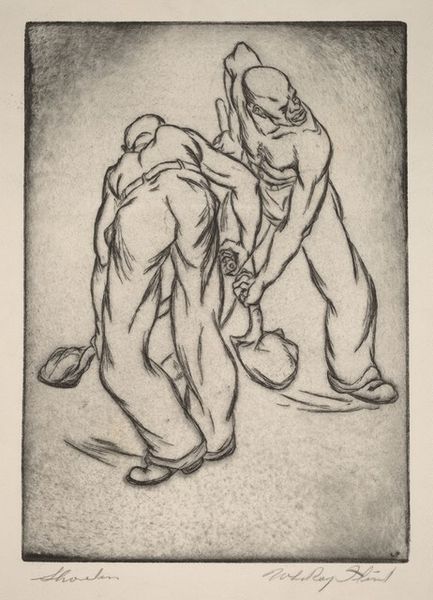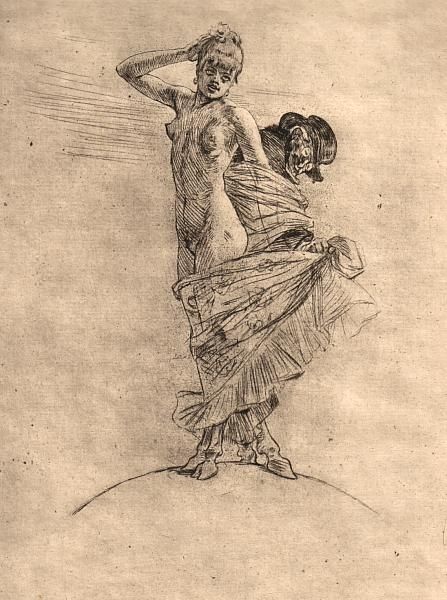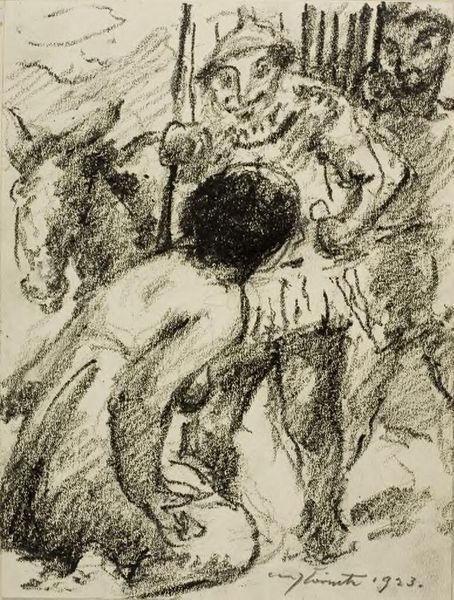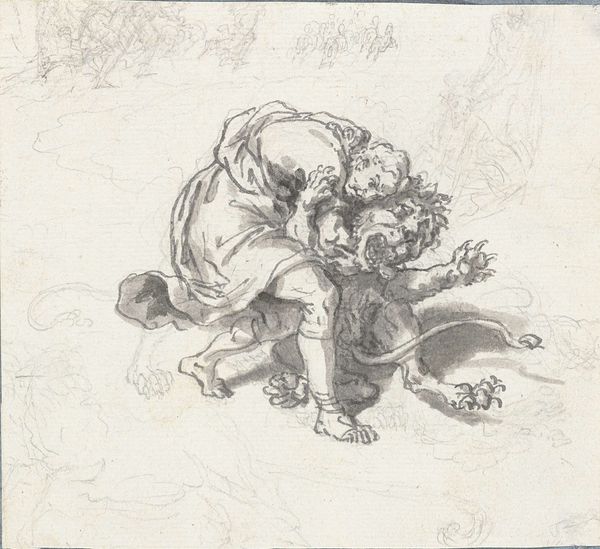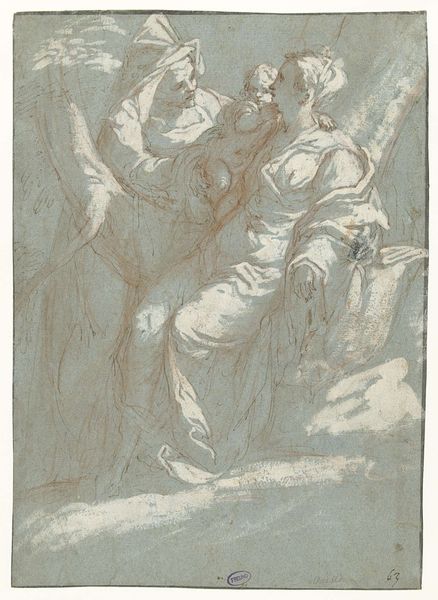
drawing, charcoal
#
drawing
#
figuration
#
charcoal
#
history-painting
Copyright: Public Domain: Artvee
Editor: Here we have Pierre-Paul Prud'hon's charcoal drawing, *Etude pour La Justice et la Vengeance divine poursuivant le crime*. It looks like a preparatory sketch for a larger history painting, and the raw, expressive lines really create a sense of urgency and impending doom. What story do you think this sketch is telling? Curator: Considering its themes – justice, vengeance, crime – it speaks volumes about the sociopolitical anxieties prevalent in post-revolutionary France. Prud'hon, despite working under Napoleon, often subtly critiqued power. A sketch like this, depicting divine retribution, resonated deeply with a society grappling with justice after the Reign of Terror. Do you see how the figure of divine justice, while seemingly triumphant, is still burdened by the figures she pursues? Editor: I do see that. There's a sense of…reluctance, maybe? It isn't a straightforward celebration of justice. Curator: Exactly. This is where the social context is crucial. The public role of art in that era was to both reinforce and question authority. Prud'hon uses classical allegory but imbues it with contemporary doubts about the legitimacy of power and the endless cycle of vengeance. How might its display, say, in a public salon, have been interpreted versus its function as a private study? Editor: Hmm, in a public space, the powerful imagery might have served as a warning against corruption, reminding viewers of accountability. While in a private setting, perhaps for other artists or patrons, it was simply exploring dynamic composition or emotional themes… but perhaps still open to similar readings? Curator: Precisely. And remember the materials too – charcoal allows for quick, expressive marks, ideally suited to capturing fleeting emotional intensity. How does this relate to his, and other artists', roles in visualizing these intangible concepts? Editor: So, the medium and composition emphasize the uncertainty and turmoil, acting as a critique of, and a reflection of the societal climate after the revolution. That adds a lot to the artwork. Thank you. Curator: It also reminds us that art is not just aesthetically pleasing. Its social and political implications greatly influence both production and public reception. A great drawing, to prompt these thoughts!
Comments
No comments
Be the first to comment and join the conversation on the ultimate creative platform.
